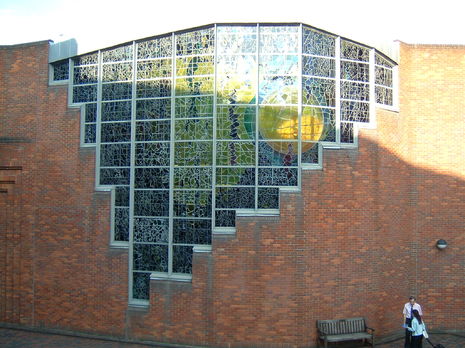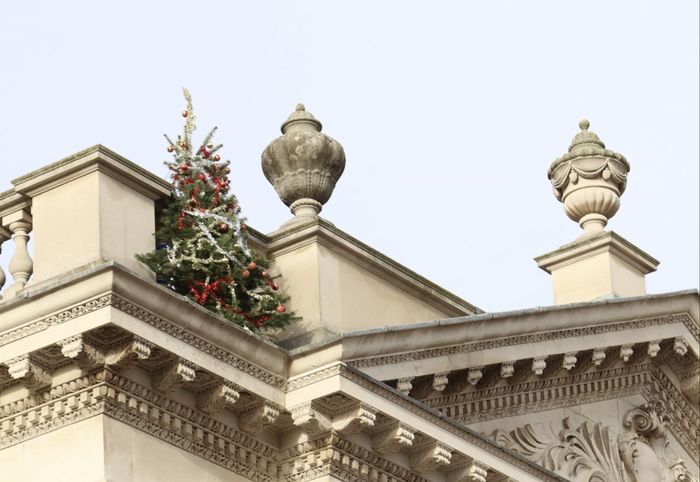Robinson College receives Grade II* listing
The new status puts the College’s 70s brick on a par with Sidney Sussex’s Cloister Court

When considering the most prestigious buildings in Cambridge, most people’s minds might wander to the likes of King’s College Chapel or the grandeur of Trinity College’s Great Court. It isn’t often that you hear Robinson College weasel its way onto that list. The University of Cambridge’s youngest college is often (both lovingly and derisively) described by students as looking like a carpark.
The Department for Digital, Culture, Media and Sport, however, seems to have a different view, having recently granted Robinson College Grade II* listed status on the advice of Historic England. Only encompassing 5.8% of all listed buildings, Grade II* sites are categorised as “important buildings of more than special interest.”
Matthew Cooper, Historic England’s senior listing advisor described the building as a “stunning city landmark”. Many students were quick to disagree. One crude comment published on Robinson’s Facebook confessions page, Love from the Bricks, jokingly suggests that illicit favours must have been performed to secure Robinson’s listed status.
On hearing the news, many students began to bemoan the issues of mould and poor draining that continue to plague the College, forgetting that even Cambridge’s most prestigious buildings have to contend with constant repairs. In response, Robinson’s JCR President, Kaz Rawdanowicz, argued: “considering Robinson doesn’t quite get the rep that it deserves around Cambridge, the fact that it’s listed as a Grade II* building is a great leap forward.”
Designed by architects Isi Metzstein and Andy MacMillan for Gillespie, Kidd & Coia, the listing report praised the design of the Chapel and library for bringing the building closest towards an “all-encompassing artwork.”
Richard Heaton, Robinson’s Warden, responded to the listing by saying that it “recognises our place in a changing aesthetic of Cambridge College architecture, and in the remarkable post-war generation of university buildings.”
To the doubters of Robinson’s architectural worth, he says, “I would invite you to come and sit in our extraordinary Chapel and marvel at its open, angular spaces and radiant window,” concluding that “our building may divide opinion, but in doing so we succeed in challenging the traditional view of what it means to be a Cambridge College.”
While most buildings in good condition built pre-1850 are almost guaranteed listed status of some kind, anything built post-1945 has to be more carefully considered to ensure its significance stands the test of time. One Robinson architecture student said, “I think that it’s really cool that a modern building is graded, it makes Robinson all the more special.” Other Grade II* listed buildings in Cambridge range include the likes of Cloister Court in Sidney Sussex College and Barnwell Priory, a 13th century Augustan monastery.
The old churches, gateways and courts that populate the Grade II* category initially seem like much more obvious choices for this status. However, Robinson isn’t the first example of brutalism to climb its way up the ranks. Murray Edward’s somewhat dystopian-looking fountain also has a place on the list, alongside St John’s College’s Cripps Building, a 1960s concrete structure which sits in stark contrast to the rest of the College’s 16th Century splendour.
Although miles away from Cambridge’s Grade I buildings in grandeur, in achieving Grade II* status Robinson has beaten out lower Grade II buildings, such as the iconic Mathematical Bridge, the University Library, and St Edmund’s College. This latter structure, built in 1896, is one of many other red-brick colleges in Cambridge, but none of them are so universally known for this feature as Robinson.
The College’s commitment to the bricks is certainly as special as its Grade II* status suggests, the distinctive feature helping to place it above older buildings such as St Edmund’s. Following this listing, many are intrigued to see which Cambridge buildings will gain listed status next. Who knows, since Robinson made the cut, maybe the Grand Arcade’s car park will be next.
 News / Cambridge student numbers fall amid nationwide decline14 April 2025
News / Cambridge student numbers fall amid nationwide decline14 April 2025 Lifestyle / First year, take two: returning after intermission14 April 2025
Lifestyle / First year, take two: returning after intermission14 April 2025 News / First candidate to announce chancellorship bid pledges to tackle bullying 12 April 2025
News / First candidate to announce chancellorship bid pledges to tackle bullying 12 April 2025 News / Uni to ‘review’ tripos rankings and weekend lectures in undergrad teaching overhaul10 April 2025
News / Uni to ‘review’ tripos rankings and weekend lectures in undergrad teaching overhaul10 April 2025 Sport / Cambridge celebrate clean sweep at Boat Race 202514 April 2025
Sport / Cambridge celebrate clean sweep at Boat Race 202514 April 2025




